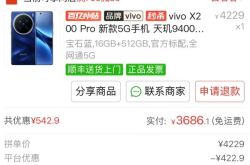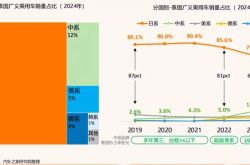Ultra-fast Fiber Laser Technology 49: High-Power Thulium-Doped Fiber Laser Amplification System Utilizing In-Band Pumping at 1700 nm
![]() 05/19 2025
05/19 2025
![]() 801
801
Laser sources in the short-wave infrared region have been instrumental in various applications such as surgical operations, material processing, lidar, remote sensing, and frequency conversion into mid-infrared, high-order harmonics, terahertz, and extreme ultraviolet light. These advancements have significantly benefited from the improved efficiency and average power of laser sources. Typically, thulium (Tm)-doped fiber laser systems with an output wavelength of 2 μm employ 793 nm pumping. However, in scenarios requiring high-pulse energy systems, traditional 793 nm pumping encounters challenges such as reduced cross-relaxation contribution and increased thermal load. This article explores the benefits of in-band pumping at approximately 1700 nm for constructing high-pulse energy systems, emphasizing high slope efficiency and low thermal load [1].
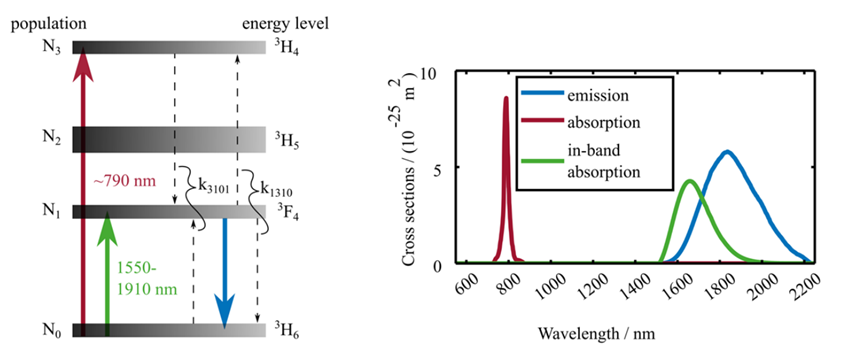
Figure 1: Energy level diagram of Tm³, showcasing the primary absorption and emission transition processes (solid arrows) alongside cross-relaxation processes (dashed arrows) (left). The absorption and emission cross-sections for the ³H band (red) and ³F band (green) are also depicted (right) [1].
In-band pumping within the 1550 nm to 1910 nm wavelength range offers an effective solution to mitigate thermal load, and its efficiency does not rely on cross-relaxation, thereby circumventing the aforementioned vicious cycle. The peak absorption cross-section of Tm³ within the in-band wavelength region is centered around 1650 nm, making approximately 1700 nm the preferred pumping band in this study.
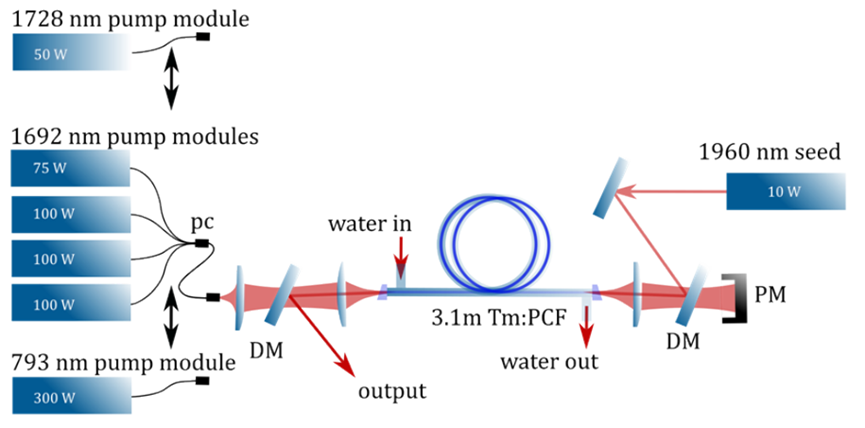
Figure 2: Experimental setup for thulium-doped fiber amplification [1].
As illustrated in Figure 2, the experiments on thulium-doped fiber amplification in this article utilized three types of pump sources:
(1) A 50 W, 1728 nm diode laser pump, achieving an amplification slope efficiency of 75%.
(2) A 370 W, 1692 nm Raman fiber pump, boasting an amplification slope efficiency of 80%. The slope efficiency being slightly lower than the Stokes theoretical limit of 86% is primarily due to the negative impact of cross-relaxation, but this negative effect is about an order of magnitude lower compared to the positive contribution of cross-relaxation for 793 nm pumping. Consequently, the negative contribution from cross-relaxation has a relatively minor impact on the slope efficiency when in-band pumping is employed.
(3) A 300 W, 793 nm multimode diode laser pump, with a slope efficiency of 47%. Additionally, simulations reveal that the thermal load on the fiber is notably lower for 1692 nm pumping compared to 793 nm pumping (Figure 3).
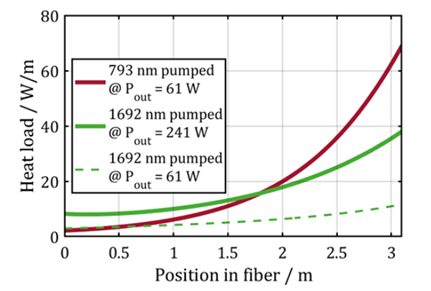
Figure 3: Simulation results showcasing the thermal load along the fiber using 1692 nm pumping (green line) and 793 nm pumping (red line) at various output powers [1].
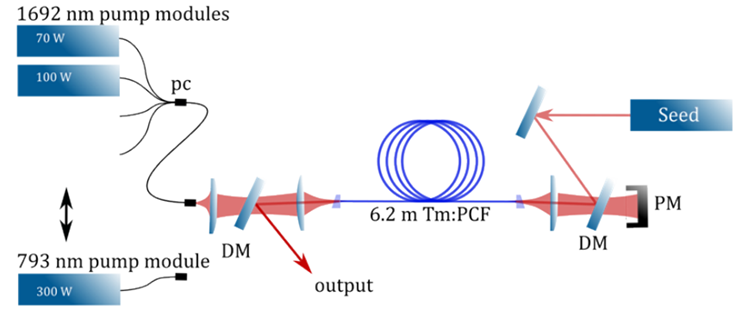
Figure 4: Experimental setup for air-cooled thulium-doped fiber amplification [1].
The article further endeavors to test the potential of in-band pumping using an air-cooled system instead of a water-cooled one. The setup, shown in Figure 4, was placed directly in the laboratory environment (relative humidity 40%, temperature 22 ℃) without any additional cooling devices. Utilizing 1692 nm wavelength pumping, a slope efficiency of up to 74% and a maximum average output power of 81 W were achieved, marking the highest average output power reported thus far for thulium-doped fiber amplification without a cooling device. In contrast, using 793 nm pumping resulted in a maximum output power of 23 W and a slope efficiency of 30%.
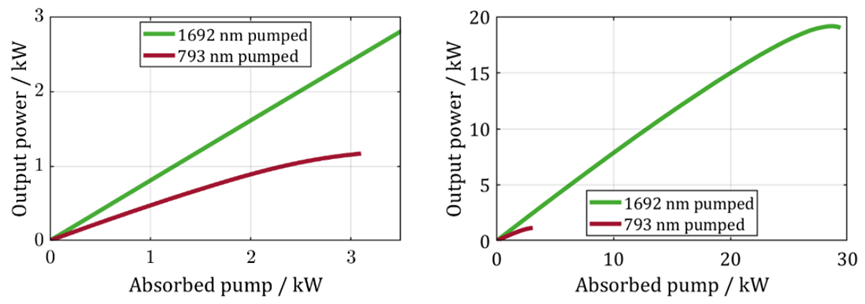
Figure 5: Output power at various pump absorption powers for 1692 nm pumping (green) and 793 nm pumping (red) [1]
Simulations were conducted to analyze the relationship between pump absorption power and output power. As seen in the left graph in Figure 5, as the pump absorption power increases, the slope efficiency of 793 nm pumping begins to decline rapidly, whereas the slope efficiency of 1692 nm pumping remains constant and consistently higher than that of 793 nm pumping. The right graph in Figure 5 presents a broader range of simulations for 1692 nm pumping, revealing a significant efficiency drop only when the pump absorption power exceeds 25 kW.
In conclusion, this article highlights the advantages of in-band pumping, particularly its high slope efficiency and low thermal load, which hold the potential for future development of kilowatt-level, high-peak power thulium-doped fiber laser systems.
References:
[1] Lenski M, Xu Q, Gierschke P, Wang Z, Heuermann T, Jáuregui C, Limpert J. Average-power scaling of in-band pumped, Tm-doped, fiber laser systems for high peak power pulsed operation. Opt Express. 2025 Apr 7;33(7):16029-16040. doi: 10.1364/OE.553640. PMID: 40219501.



